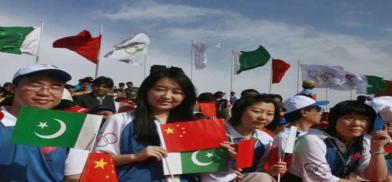Pakistan's Chinese bugbear: Growing attacks pose a new security challenge for Islamabad
The Chinese presence in Pakistan, with or outside of the CPEC, and the TTP's defiance, although not directly related, do pose growing security challenges to Pakistan and China, especially when the two want to combine forces to extend the CPEC to Afghanistan.

Pakistan is confronted with a new security challenge: it must protect its own ethnic Chinese citizens besides providing security to the growing number of Chinese workers at various projects under the multibillion dollar China Pakistan Corridor (CPEC).
In the latest attack on them in Karachi on September 27, 2022, a man entered the clinic of an ethnic Chinese dental surgeon, posed as a patient, shot dead one Chinese, Ronald Raymond Chou, on the spot, and injured Richard Hu and Phen Teyin, before fleeing. Nobody has claimed responsibility for the attack.
This adds to the attacks on the Chinese workers engaged in the CPEC projects, both in the Pashtun area in the north and the Baloch terrain in the south. Both have ongoing movements by the 'nationalists' who oppose the Pakistan government and its handling of the CPEC projects that they say have marginalized their people while exploiting local resources.
The number of Chinese nationals engaged in CPEC and other projects was 60,000 in the year 2018. More recent figures are unavailable, but there is a large migrant population of Chinese workers employed as required. The local youths resent their presence.
Mounting assaults
The Baloch militants have warned the government of China that its nationals would be targeted if they did not withdraw from commercial activities in the restive southwestern province.
In July last year, a Chinese national was shot and wounded in Karachi, two weeks after nine Chinese workers were killed at the Dasu hydroelectric project under the CPEC when an explosion sent their bus over a ravine in the north of the country.
A Baloch woman exploded herself at the Confucius Centre in Karachi killing four. She is said to be Pakistan’s first suicide bomber. The Chinese closed down all its cultural centres in Pakistan after this incident.
As for the ethnic Chinese in Pakistan, they settled mainly in Karachi, like in other cities across South Asia in the British era, and stayed on. Two of their preferred professions have been shoemaking and dentistry.
They now comprise one of Pakistan’s significant expatriate communities. During the 1940s many Chinese Muslims fled unrest in China and settled in Karachi. However the Chinese community there is primarily of non-Muslim origins; their ancestors were Buddhists, but subsequent generations follow other religions or none at all. About 30 per cent are estimated to have converted to Islam.
Ethnic Chinese
Most Chinese in Karachi are second-generation children of immigrants—the oldest generation has mostly died, while the third generation has migrated to other countries. They rarely wear Chinese clothing but still retain the Chinese language that they speak at home. In recent years they have shown an increasing language shift towards Urdu.
Some Chinese families took to running healthcare centres and beauty parlours. The ones in Islamabad earned the ire of the clergy running Lal Masjid complex the capital city in 2007. Allegations that these parlours doubled as brothels led to attacks on them and the kidnapping of some Chinese by students of clergy running the Masjid and the adjacent Jamia Hafsa madrassa.
The CPEC factor
The confrontation between the government and the clergy had been building up since 2006. After negotiations, and under Chinese diplomatic pressures post these kidnappings, then President Pervez Musharraf ordered a siege of the complex operated by Islamic militants led by two brothers, Abdul Aziz and Abdul Rashid.
The complex was stormed and captured by the Pakistan Army's Special Service Group. The government reported that the operation resulted in 154 deaths, and 50 militants were arrested (other estimates were higher). The military response was to address not just pressure from locals but also diplomatic pressure from China.
While the control and ownership of the complex have remained a contentious issue since, security experts have said that this triggered confrontation in the tribal areas of Waziristan and gave birth to the Tehreek-e-Taliban Pakistan (TTP), the country’s most dreaded militant outfit that works out of Afghanistan and is spreading its base across Pakistan. The TTP is accused of being responsible for 83,000 deaths.
It has also emerged as a significant diplomatic sore point between Pakistan and the Taliban government in Afghanistan. Islamabad expects Kabul to either evict them or at least broker peace. But the Taliban, who treat TTP as their ideological brothers, say it is Pakistan’s internal problem.
The Chinese presence in Pakistan, with or outside of the CPEC, and the TTP's defiance, although not directly related, do pose growing security challenges to Pakistan and China, especially when the two want to combine forces to extend the CPEC to Afghanistan.
(The author is a veteran journalist and commentator on South Asian affairs. Views are personal. He can be reached at mahendraved07@gmail.com)










Post a Comment